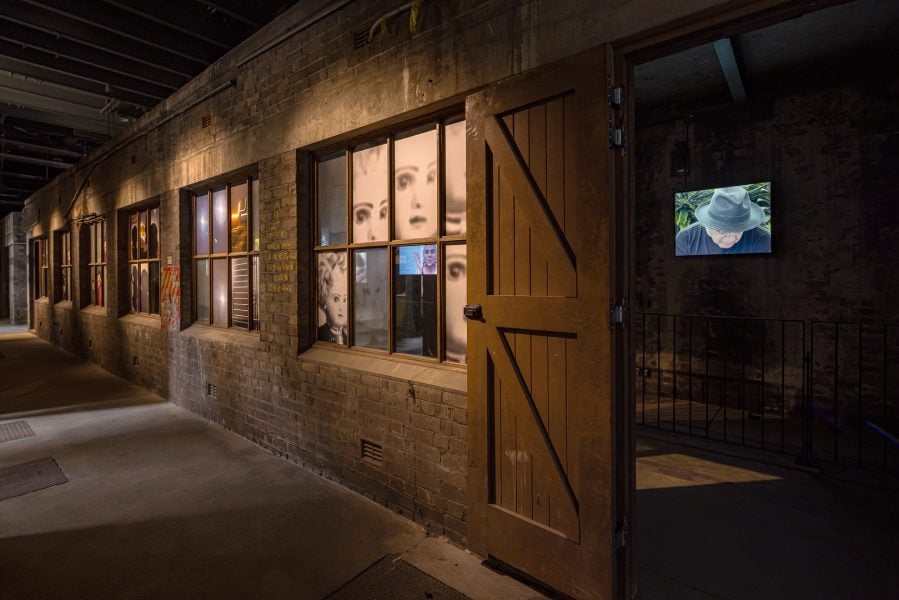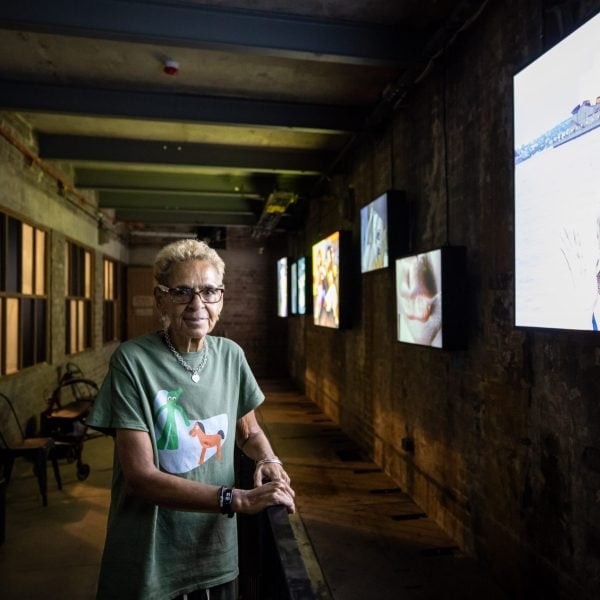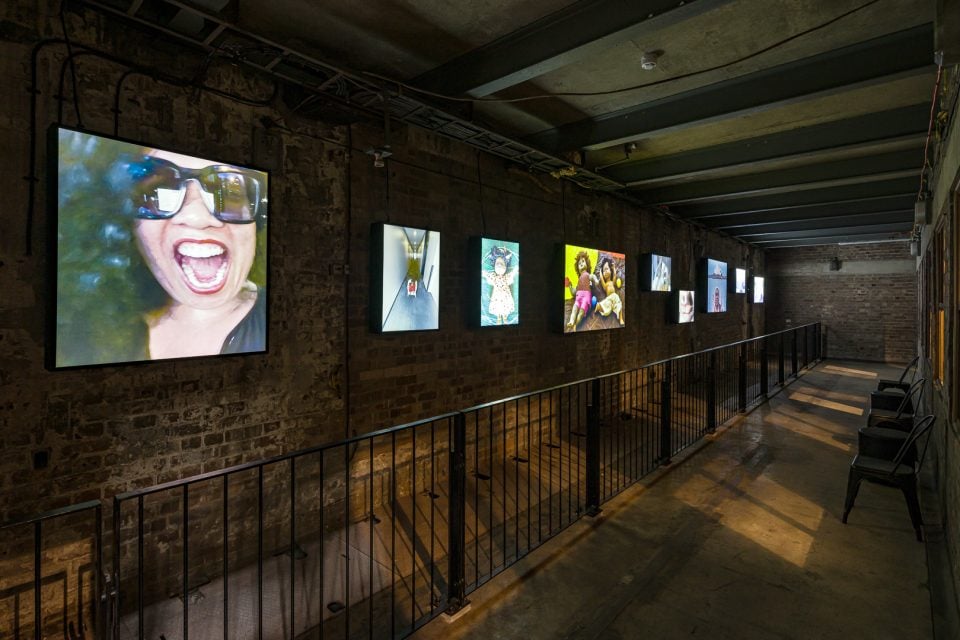White Power Bay
Blak Bay, 2023–2024
9 lightboxes
Commissioned by the Biennale of Sydney with generous support from a grant from the Open Society Foundations with generous assistance from the Australian Government through Creative Australia, its principal arts investment and advisory body. Courtesy the artist and Roslyn Oxley9 Gallery.
White Bay, named for John White, a surgeon aboard the First Fleet, symbolises Australia’s colonial foundation in 1788. Its history, rooted in 19th-century transport and industry, reflects the commercial and colonial ventures that displaced and marginalised Indigenous communities. Dr Destiny Deacon’s Blak Bay commission is a powerful counternarrative. The title uses Blak, a term coined by Deacon in 1991 which is now a seminal part of the vernacular of resistance, in defiance of the colonial implications of ‘white’.
Deacon’s photographs at White Bay Power Station introduces an Indigenous story into a colonial-named location by challenging its legacy. On the exterior windowpanes, Deacon inserts gloomy photographic images of dolls pressed against flywire, hazy nocturnal views from Deacon’s home in Brunswick, Melbourne, as well as black and white found images of a watchful doll belonging to the daughter of the Russian Czar from the 1917 revolution. Inside Blak Bay is a suite of vibrant lightboxes dynamically sequenced to turn on and off. Together, Deacon’s installation urges viewers to reconsider names, histories, and spaces through an Indigenous perspective. In essence, Deacon’s work is a beacon of reclamation, confronting and re-envisioning Australia’s colonial past.


